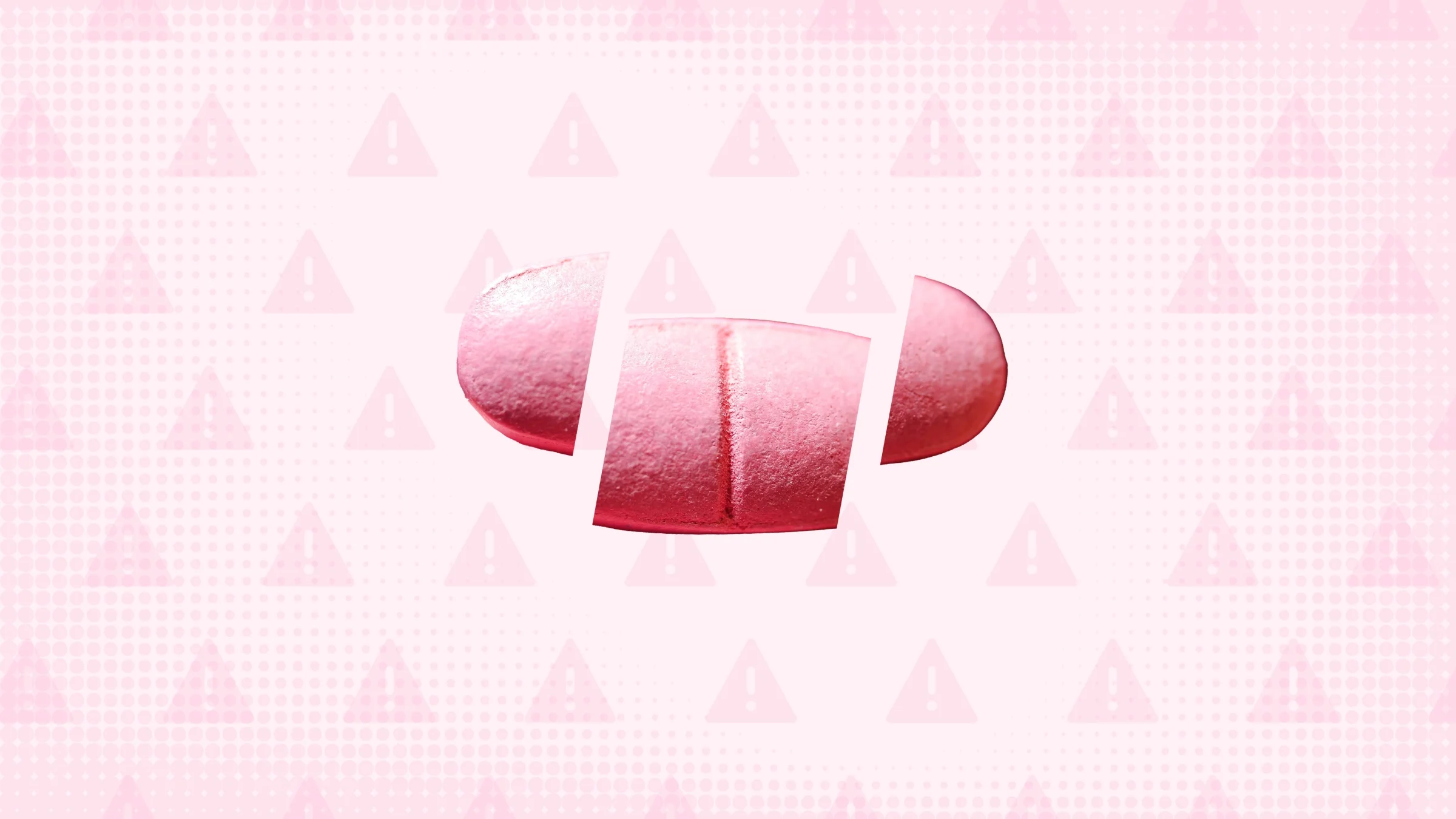Key takeaways:
Letairis (ambrisentan) is a once-daily oral medication for pulmonary arterial hypertension. It works by relaxing blood vessels in the lungs.
Common Letairis side effects include fluid retention, nasal congestion, and flushing. Cough, anemia, and indigestion are also possible, especially when you take Letairis with tadalafil (Adcirca).
Letairis has a boxed warning for potential harm to a growing fetus. If you’re able to get pregnant, you must enroll in a special risk-management program to lower this risk.
Save on related medications
Letairis (ambrisentan) is a medication used to manage pulmonary arterial hypertension (PAH), a health condition in which high blood pressure in the lungs makes it hard to breathe. By relaxing blood vessels in the lungs, Letairis helps lower lung pressure, improve oxygen flow, and slow the progression of PAH.
Like all medications, Letairis comes with potential side effects. As part of the endothelin receptor antagonist (ERA) class, it can cause fluid retention, leading to swelling in the arms or legs. Other common side effects include nasal congestion, flushing, and headaches. Although less frequent, more serious side effects, such as liver damage, may also occur.
Understanding Letairis side effects and how to manage them can help you stay on track with your treatment while minimizing discomfort. Here’s what you should know.
Letairis side effects at a glance
Letairis can cause mild side effects similar to other medications in its class. Most side effects can be managed at home. But more serious side effects may require medical attention. Certain side effects may be more likely if you take Letairis with tadalafil (Adcirca), another PAH medication.
Common or mild Letairis side effects include:
Fluid retention
Nasal congestion
Sinus infection
Headache
Flushing
Cough
Anemia
Indigestion
Bronchitis
Rare but potentially serious Letairis side effects include:
Liver damage
Fluid in the lung
Severe anemia
Worsening heart failure
Letairis also has a boxed warning, which is the FDA’s strictest warning for a medication. This is because Letairis can harm a growing fetus if you take it while pregnant.
Continue reading to learn about eight Letairis side effects and how you can manage them.
1. Fluid retention and swelling
Letairis can cause the body to retain fluid, leading to swelling in the arms or legs. This side effect may be more likely to happen if you take Letairis with tadalafil. You may notice swelling within a few weeks of starting the medication.
Here are a few tips for managing swelling:
Elevate your legs when sitting or lying down to help reduce swelling.
Reduce your salt or fluid intake (if recommended by your care team).
Discuss the possibility of taking a diuretic (water pill) to reduce fluid buildup.
Keep track of your weight daily. Sudden weight gain could be a sign of fluid retention.
Swelling from Letairis is often mild and can be managed at home. But in some cases, it may require medical attention if there’s fluid buildup in the lungs or worsening heart failure. So make sure to tell your prescriber if it’s happening. Additional symptoms, such as weight gain, trouble breathing, and fatigue, can also indicate a more serious issue.
2. Stuffy nose
Nasal congestion is another possible side effect of Letairis. This is because it relaxes blood vessels, including those in the nasal passages. But keep in mind that a stuffy nose has several potential causes, including the medication, an infection, or seasonal allergies.
A stuffy nose is usually harmless, but it can be bothersome. Here are a few tips to help you get some relief:
Use a saline nasal spray or rinse to clear your nasal passages.
Avoid allergens or irritants, such as strong perfumes, which can worsen congestion.
Try an over-the-counter (OTC) nasal antihistamine or steroid spray. Steer clear of decongestants like pseudoephedrine (Sudafed), since they can worsen PAH symptoms.
Tell your healthcare team if your nasal congestion is severe, or if you think you’re getting sick. They can recommend the best next steps.
3. Flushing
You may experience flushing, or a sudden feeling of warmth or redness, on your face after starting Letairis. Flushing can also happen because of how Letairis relaxes blood vessels.
Flushing can feel uncomfortable. But there are a few things you can try to help:
Drink enough water to stay hydrated and help regulate your body temperature.
Avoid triggers such as spicy foods, alcohol, and caffeinated drinks, which can worsen flushing.
Dress in loose clothing to stay cool and comfortable.
Use a fan or lower the thermostat to keep your environment cooler.
Flushing from Letairis is usually mild and may improve as your body adjusts to the medication. If it becomes bothersome, talk to your healthcare team.
4. Headache
People taking Letairis also report headaches as a side effect. Headaches may be more likely to occur if you’re taking Letairis with tadalafil. If you experience this side effect, here are a few tips for managing them:
Stay well-hydrated and avoid skipping meals, since dehydration and low blood glucose (sugar) can worsen headaches.
Make sure you’re getting enough sleep.
Avoid or minimize triggers such as certain foods, alcohol, or caffeine that may worsen headaches.
Talk to your healthcare team about taking OTC headache medications, such as acetaminophen (Tylenol).
Tell your prescriber if your headaches persist or become severe. They may need to adjust your medications or recommend additional strategies for managing them.
5. Liver damage
Other ERAs, such as bosentan (Tracleer), can cause liver damage. But the risk of liver damage from Letairis is low. Even so, your healthcare team may want to monitor your liver health while taking it. If they see significant changes in your blood tests, they may have you stop Letairis.
Tell your healthcare team right away if you notice symptoms such as:
Nausea and vomiting
Stomach discomfort
Jaundice (yellowing of the skin or eyes)
Dark urine
6. Anemia
Letairis can cause a significant drop in hemoglobin levels, particularly during the first few weeks of treatment. Hemoglobin is a protein that carries oxygen in red blood cells. When hemoglobin levels get too low (called anemia), your tissues don’t get as much oxygen. This can cause symptoms such as:
Extreme fatigue or weakness
Shortness of breath
Dizziness or lightheadedness
Pale skin
Your healthcare team may monitor your hemoglobin levels before starting Letairis and after 1 month of taking it. They may check your blood work periodically after that. But it’s a good idea to tell them if you notice any of the symptoms listed above.
7. Decreased sperm counts
Decreased sperm counts have been reported with other ERAs. Animal studies with Letairis have also shown this side effect. So it’s possible that Letairis could decrease sperm counts.
If you and your partner are planning to get pregnant, discuss this with your healthcare team before starting Letairis. Together, you can decide what steps you can take to reach your family-planning goals.
8. Harm to a growing fetus
As mentioned, Letairis has a boxed warning because it can harm a growing fetus. To manage this risk, you’re required to enroll in a special risk-management program if you’re able to get pregnant. Here are the general requirements:
A negative pregnancy test before starting Letairis
Monthly pregnancy tests during treatment and 1 month after stopping the medication
Using adequate contraception, such as an intrauterine device or a combination of birth control pills and condoms
Your healthcare team can help you choose appropriate birth control methods to prevent pregnancy while taking Letairis.
The bottom line
Common Letairis (ambrisentan) side effects include fluid retention and swelling, a stuffy nose, and flushing. Headaches can also occur. Some Letairis side effects may be more likely if you take it with tadalafil (Adcirca). In many cases, these side effects can be managed at home.
Although less common, serious Letairis side effects, such as liver damage and anemia, have also been reported. And if you’re able to get pregnant, you’re required to enroll in a special risk-management program. This is because Letairis can harm a growing fetus.
If you have questions about Letairis side effects, talk to your care team. They can help you manage your symptoms.

Why trust our experts?



References
National Heart, Lung, and Blood Institute. (2022). What is anemia? National Institutes of Health.
Pulmonary Hypertension Association. (2012). Ask a PH specialist.
Sun Pharmaceutical Industries. (2024). Ambrisentan- ambrisentan tablet, film coated [package insert].
U.S. Food and Drug Administration. (2018). FDA drug safety communication: Liver injury warning to be removed from Letairis (ambrisentan) tablets.



